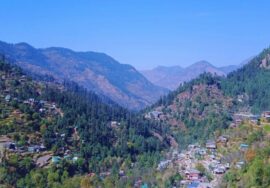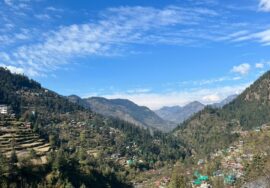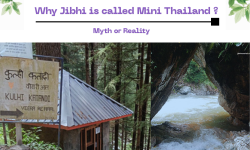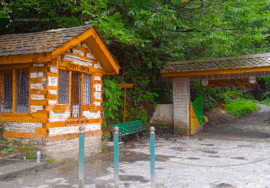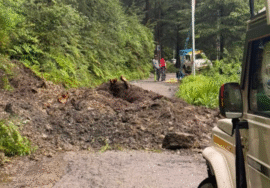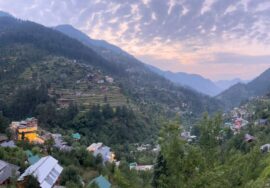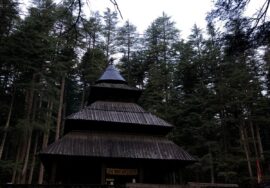
Rohtang Pass and the Hidden Wonders of Jibhi & Jalori Pass (Updated) 2025-2026
In the midst of the imposing Himalayan mountains, Kullu Manali located in Himachal Pradesh is one of the most sought-after destinations for tourists in India. It is renowned for its stunning natural beauty, lush valleys flowing rivers, and snow-covered mountains, this region has more than scenic views and offers an experience that will last the lifetime. The most famous attraction includes its Rotang Pass famous mountain pass which links the Kullu Valley to the remote regions of Lahaul and Spiti.
However, Kullu Manali is not just about Rotang Pass. A short distance away are the peaceful town that are Jibhi as well as the exciting Jalori Pass beckon anyone who wants to explore the Himachal Pradesh’s many hidden treasures. The blog in this article will not just explore the enchanting beauty and adventures from Rotang Pass however, it will it will also show you the nearby treasures, Jibhi and Jalori Pass, that provide an ideal destination for people who love adventure, or anyone looking for a tranquil getaway.

Introduction to Rotang Pass
Rotang Pass often referred to in the form of Rohtang Pass is a majestic mountain at 3978m (13,051 feet) above sea level. It is among the most famous and easily accessible mountains in India situated about 51 km (32 miles) from Manali the most well-known hill station located in Himachal Pradesh. The pass is a crucial connection connecting and the Kullu Valley and the Lahaul and Spiti valleys, which makes it a major trade route in the past as well as a popular tourist destination today.
“Rohtang” is the name given to it “Rohtang” is derived from the language spoken in the area that includes “Roth” meaning “ground” and “Tang” meaning “dead.” The name was chosen in honor of”dead bodies “dead bodies” that were previously found in the area due to the treacherous weather which included snowstorms and avalanches creating dangers for travelers prior to the development of modern roads.
The present day, Rotang Pass is a wonder of engineering providing an experience that is among the top road journeys anywhere in the world. It features the road winding through soaring mountains, and providing panoramic panoramas of surrounding snow-covered mountains, valleys and rivers. It’s an ideal destination to those traveling towards Leh, Ladakh, and the higher Himalayas.
Geography and Climate of Rotang Pass
The geographic features that make up Rotang Pass are both breathtaking as well as challenging. The pass is situated at the foot of the Pir Panjal Range, it links to the Kullu Valley to the barren and remote regions of Lahaul. The people who cross the pass are able to are confronted with a sudden change in the ecosystem from the mild climate of Manali to the alpine, cold landscape beyond the pass.
The conditions for weather in Rotang Pass are notoriously unpredictable. The conditions here are alpine with a heavy snowfall during the winter months. This makes it unpassable throughout the year. From May through October, the road remains accessible, even though snow may still be seen during fall and spring months. The region is characterized by temperatures that range from between -5degC and 15degC in the summer months, and is able to drop dramatically in winter, with temperatures dropping far below freezing.
Travelers can anticipate snow, even in the summer months, especially in higher altitudes. The road leading to Rotang Pass is usually blocked by landslides, snow and avalanches in the winter months, and road conditions can alter rapidly. This is why it’s essential for motorists to be aware of road conditions ahead of time prior to taking the trip.
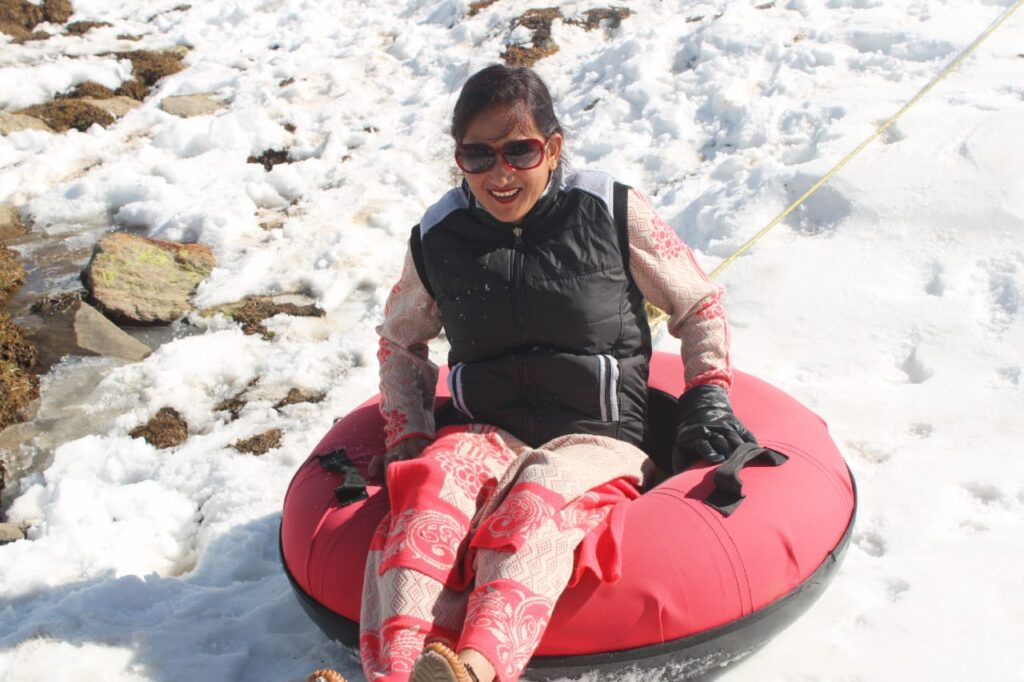
The Journey to Rotang Pass: Road Conditions and Accessibility
Achieving Rotang Pass is an experience in and of itself. The trip is a series of winding roadways, narrow lanes as well as sharp twists, making the trek thrilling and demanding. Although the road between Manali through Rotang Pass is generally maintained but the terrain may be rough and the road conditions can alter rapidly due to weather, landslides or snowstorms.
The main road that leads that leads to this pass is called the Manali Leh Highway which is the main route for trekkers and travelers heading towards Leh, Ladakh, and beyond. In the peak tourist season buses, taxis and private vehicles go through Rotang Pass every day and offer tourists to take in the breathtaking views of mountains. It is nevertheless recommended to travel in solid vehicles, and preferably with four-wheel drive in the event that roads can be rough.
Because the pass is closed for much of the year because of the heavy snowfall, authorities are able to open the pass to public use in the summer months, usually between May and October. In recent times authorities from the Indian government has taken steps to regulate the growing circulation of vehicles through The Rotang Pass including restricting traffic during peak hours to ease congestion and reduce environmental harm.
The drive itself is breathtaking as it takes visitors through many picturesque areas such as The Solang Valley, known for its sports activities, and the stunning Beas River. The final stretch prior to Rotang Pass is particularly thrilling as the road cuts through snow-capped valleys and mountains and valleys, providing the most stunning panoramas in the region.
Best Time to Visit Rotang Pass
The best timing to go Rotang Pass is largely dependent on the type of experience you’d like to see and be able to experience. Every season has its own unique aspect of the beauty of this pass:
- Summer (May through Oct.): The pass is accessible best during the summer months. The weather is warm and the snow starts to melt, leaving the lush green meadows and stunning alpine blooms. It is also the ideal time to travel who wish to take in the breathtaking views and the cool air. The temperature ranges from 10degC and 15degC which makes it a great escape from the scorching summer plains.
- The winter months (November through the month of March): For those who want to experience a winter wonderland The winter months bring massive snowfalls, making the pass an ideal destination for those who love snow. However it is a challenge during winter as roads are typically blocked by land slides and snow. The extreme weather conditions make it hard to access the pass and only the most daring tourists attempt to go during winter.
- The seasons of spring and autumn (April to October): These transitional months are characterized by an intriguing mix of greenery and snow. The weather stays relatively steady and the valleys are blooming in the spring. The autumn is characterized by a fresh and crisp environment, making it an ideal time for nature photographers and photographers.
Adventure Activities at Rotang Pass
For those who love adventure, Rotang Pass is a heaven that offers numerous thrilling options. Some of the most sought-after things to do at Rotang Pass include:
- Skiing as well as Snowboarding: Winter transforms Rotang Pass into an area of excellence in the world of skiing as well as snowboarding attracted by both novice and seasoned adventurers. The slopes that are covered in snow at Solang Valley, situated near Rotang Pass is ideal for these kinds of activities. There are instructors for those looking to take on the challenge, making it accessible to people of all levels of ability.
- Paragliding Its high altitude position at Rotang Pass is an ideal location for paragliding. Paragliders can fly high above valleys and get views from the air of mountain ranges and valleys.
- trekking: There are several routes for trekking near Rotang Pass which offer breathtaking panoramas of the Himalayan Mountains. The hike from Rotang Pass is a strenuous but rewarding adventure, taking hikers through villages in remote areas and high-altitude scenery. The hike to close Chandratal Lake is an additional popular route, giving visitors the opportunity to experience the beauty of high altitude lakes.
- Mountain Biking: The rugged terrain and steep slopes surrounding Rotang Pass make them ideal to mountain bike. The sport is very popular with people who are looking to enjoy the thrill of biking through the mountains.
- Camping Nature lovers camping near Rotang Pass gives the opportunity to take a deep dive into the tranquility in the Himalayas. The area has designated camping areas that allow visitors to spend their nights under the stars, and be surrounded by the majestic mountains.
Rohtang Pass (latest update 2025)
Rohtang is magical in winter. The entire landscape, covered in shimmering snow creates a peaceful and serene atmosphere. It is common to see snowflakes falling from misty, cloudy skies during this season, transforming the landscape into a white, paradise. Temperatures are usually well below zero, so you’ll need to wrap up in gloves, jackets and scarves.
Activities To Enjoy:
Rohtang is a popular destination for thrill-seekers, snow enthusiasts and adventurers in January. Some of the most popular activities are skiing or snowboarding down powdery snow slopes, building snowmen, and engaging with playful snowball fighting. Those who want a quieter adventure can just enjoy the views of snowy peaks, pine trees and other natural beauty.
It is said that the thick mist that surrounds the mountains offers a truly unique experience. The mist lends the scene a dreamlike appearance, creating some amazing photo opportunities. If you’re very lucky, the snowy terrain and the mist will combine to create an ethereal or otherworldly atmosphere.
Rohtang in January offers adventure and calmness. You can either enjoy hot tea in the snow as you watch it dance or you can zip down a mountain with adrenaline. Remember to check weather reports locally before leaving as conditions may change quickly. Rohtang Pass has a unique winter beauty, but January makes it even more special!
Exploring Jibhi in 2025
Even though Rotang Pass has been one of the main attractions in the Kullu-Manali region surrounding areas provide an array of delights for visitors looking for an unhurried, less-traveled experience.
Jibhi
It is located around 150 kilometers away from Manali, Jibhi is a picturesque, small village situated in Manali’s Himachal Pradesh region, known for its breathtaking natural beauty and serene surrounding. In the Tirthan Valley, Jibhi provides visitors the chance to enjoy the countryside Himachal Pradesh in its finest.
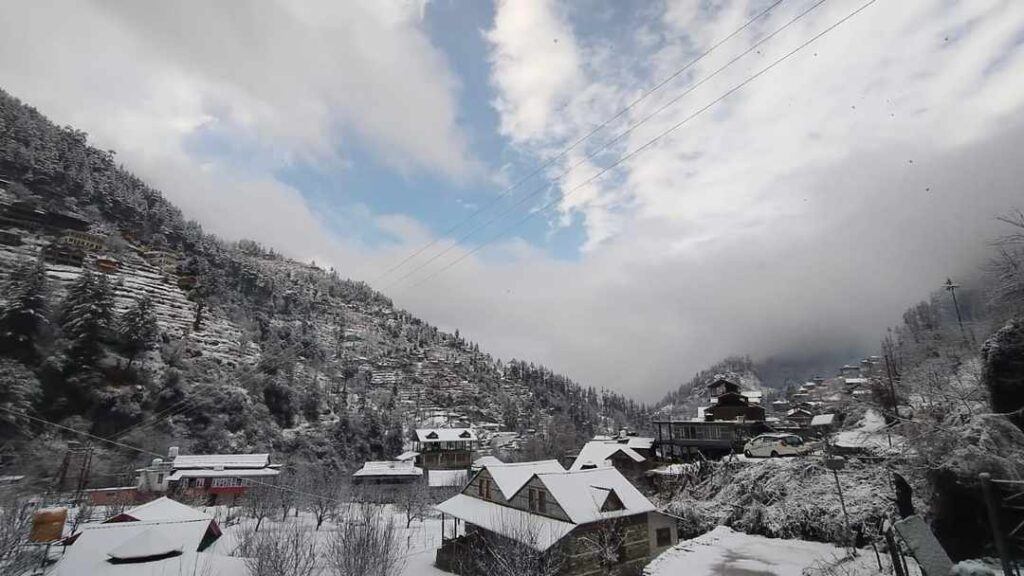
Tourists visiting Jibhi can take a relaxing stroll on the Tirthan River, visit local villages, and hike through the adjacent Jalori Pass, an extremely popular trek destination. Jibhi is also renowned for its wood-built houses as well as the lush pine forest and a thriving wildlife scene, with the sightings of snow leopards as well as numerous bird species. It’s a wonderful spot to get away from the bustle and noise of daily life and lose yourself in the beauty of nature.
Why Visit Jibhi?
Imagine waking up to the sound of birds singing, walking to waterfalls and being free from the urban chaos. Jibhi has all these qualities and more. This offbeat destination is no wonder it has become popular in Himachal Pradesh. Jibhi is a must-see destination.
- The Best of Nature Scenery: Jibhi’s landscapes will soothe your soul.
- Jibhi has outdoor activities like paragliding for adrenaline junkies and first-timers. Fly fishing and trekking.
- Homestasis Charming: Enjoy a warm welcome in traditional Himachali wood-built homes or eco-friendly stays nestled among the forests.
- Detoxify from digital media: Jibhi offers a chance to get in touch with nature, away from the hustle and bustle of hill stations.
The Top Adventure Sports in Jibhi
1. Trekking
Jibhi has a variety of hiking trails that are open to trekkers regardless of their level. Here are some popular treks.
- Hike to the Jalori peak: A 5km trek offers stunning views of Himalayan mountains clad with snow.
- Serolsar Lake Trek Serolsar Lake Trek – A tranquil hike through oaks and pins that leads to the stunning blue waters of Serolsar Lake.
- Roller Ridge Trek: An unexplored gem for veteran trekkers looking for adventure.
2. Paragliding
Enjoy the panoramic views of the Himalayan peaks while experiencing the thrills of aerial flight. Bir-Billing, the paragliding capital of India, is only an hour away from Jibhi. Even beginners will be safe with the help of experienced instructors.
3. Rock Climbing & Rappelling
You can also climb the Himalayan Mountains in guided sessions. Rappelling is another option that offers stunning views.
4. Camping Under the Stars
There is nothing more relaxing than setting up camp near a stream, and drifting off to sleep with the sound of flowing water. Shoja Base Camp is a luxury and wild experience.
5. Fly Fishing in Tirthan River
Fly fishing is a great way to find peace and excitement. In India, the Tirthan valley is one of few places to go trout-fishing. This is a rewarding and fun activity for both beginners and experts.
6. Jeep Safaris
A jeep adventure is the best way to explore Jibhi’s steep and rugged trails. Safaris in Jalori Pass offer a unique way to enjoy the stunning scenery and thrills this area has to offer.
7. Snow Adventures Seasonal
Visiting Jibhi in winter? Prepare yourself for snowball fights, snowman making or snow hiking at Jalori Pass.
Jibhi has many attractions to discover and enjoy
Jibhi is more than an adventure park.
- Jibhi Waterfall. This picturesque location is perfect for a picnic or quiet retreat.
- Chaini Kothi. Near the village Chaini, a 17th century tower built in ancient Himalayan style.
- Browse Local Markets for Handicrafts and Woolens. Don’t forget to try the local Himachali food.
- Jibhi is an ideal place for birdwatchers, thanks to its diverse fauna and flora. Watch out for Himalayan Monals and pheasants.
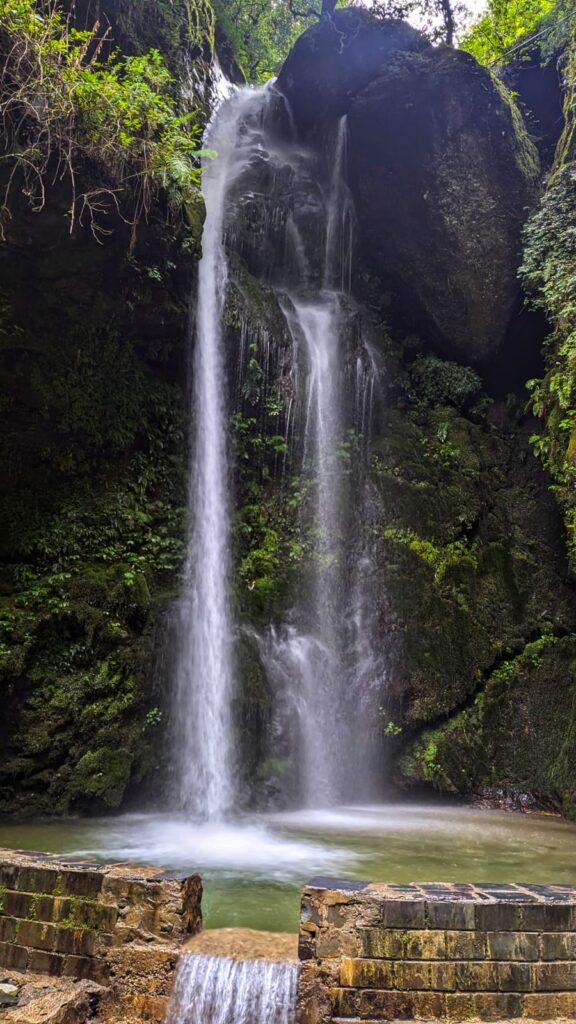
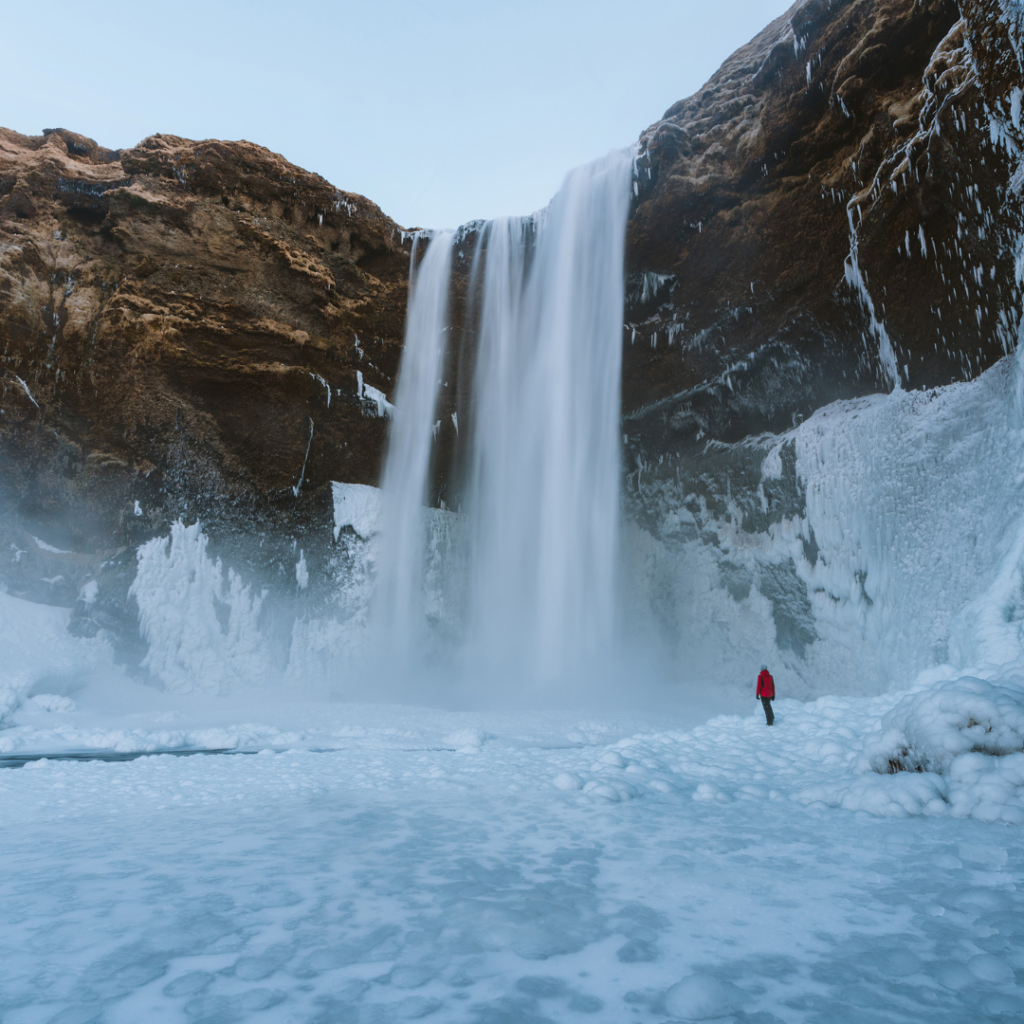
The best time to visit Jibhi
Jibhi has a wide range of seasons, but the right timing will enhance your experience.
- With the vibrant greenery and comfortable temperatures, this is a great time to take a hike.
- The Monsoon season is between July and September. Falls are spectacular, even if some treks may be difficult.
- October to February: If snow-capped landscapes and chilly adventures excite you then the winters at Jibhi are magical.
What to do in Jibhi
Jibhi offers a range of accommodation options, from budget-friendly guesthouses to luxurious treehouses.
- Riverside camping lodges: for adventurers.
- Luxury Tourists: Stay at cozy wooden cabins like The Jibhi Treehouse or Jibhiretreat.
- Treehouse is the best place to stay in Jibhi instead of hotels.
Travel Tips For The Years 2025-2026
- Jibhi’s internet access can be patchy. Download offline maps and keep small bills on hand for local transactions.
- Durability: By reducing waste and supporting local businesses, you can preserve Jibhi’s natural beauty.
- For adventure sports and treks, hire local guides. You can often get the best safety from them because they are familiar with terrain.
Jibhi viewed in a new light
Jibhi promises adventure, relaxation and unforgettable memories. Jibhi will surpass your expectations, whether you are hiking through lush forests, enjoying locally brewed coffee by a cozy fire, or standing on top of a mountain overlooking a stunning view.
Are you getting ready for your vacation? Pack your bags and prepare your gear, then visit Jibhi.
Explore Jalori Pass ( Latest Update 2025)
For those looking to experience adventure and excitement in the wilderness, Jalori Pass is another hidden gem located near Jibhi. Jalori Pass lies in Himachal Pradesh’s Kullu District. It is a paradise for those looking for tranquility and adventure. The pass is located at 3150 meters (10,335 feet) and provides stunning panoramic views over the nearby mountains and valleys. offers panoramic views of the Himalayas. Jalori Pass can be a great destination for travel. It offers an amazing adventure.
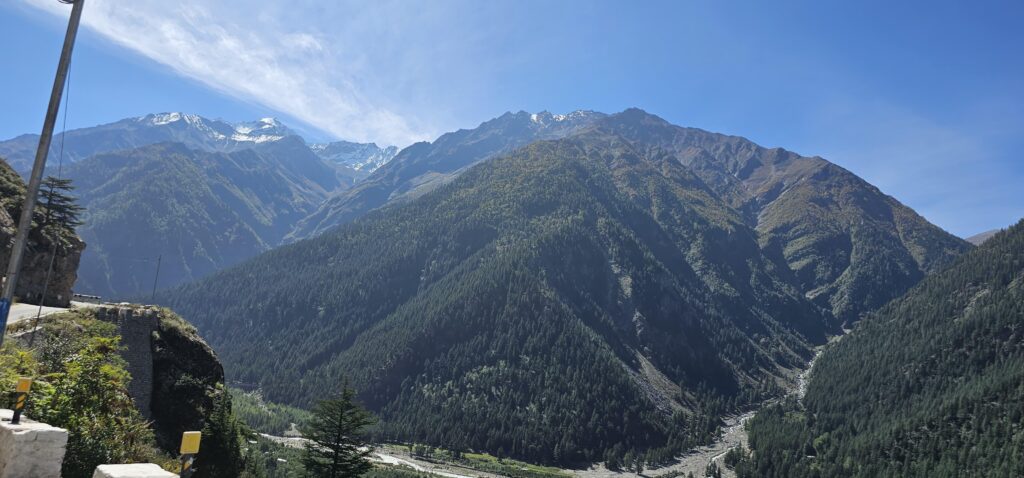
Jalori Pass is a popular place for nature enthusiasts alike. The hike to Jibhi towards Jalori Pass takes about 2-3 hours and takes you through thick forests and chances to see numerous wildlife species along the route. When you reach the top of the pass, visitors will be rewarded with stunning panoramas of mountains and also the chance for a visit to Sarang Wildlife Sanctuary. Sarang Wildlife Sanctuary situated nearby.
Top Jalori Pass Activities
You shouldn’t skip this list.
1. Trekking Adventures:
- Serolsar Lake Trek The 5 km trek from Jalori Pass down to Serolsar Lake is a must. This trail will take you through a dense, beautiful forest.
- Raghupur Trek. On the way, enjoy wildflowers as well as panoramic views. The moderately difficult hike will be well worth your time.
2. Camping:
Set up camp under stars to experience the tranquility of the countryside. You won’t find a nicer place to relax.
3. Snow Fun
In the winter Jalori Pass turns into an enchanting wonderland of white. All of these activities are enjoyable, whether you’re snow trekking, sledding on snow or making snowmen.
4. Birdwatching:
Pine Forests are a natural paradise for nature-lovers who will enjoy different bird sounds.
Enjoy the view by taking pictures.
Dhauladhar Ranges, lush Valleys and Sunrise are the photographer’s dreams. Sunrises and sunsets are sure to give you some stunning pictures.
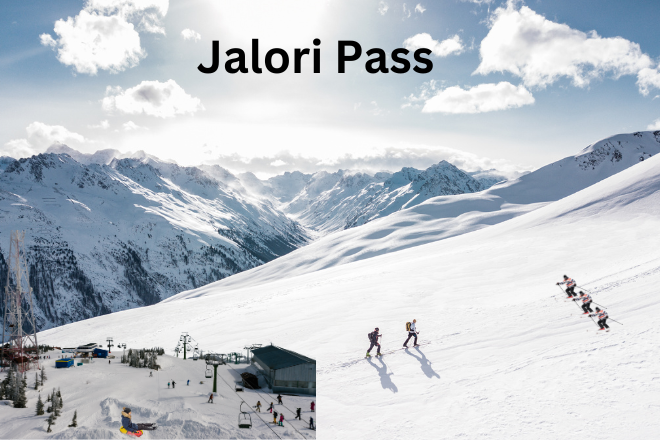
Conclusion
Anyone planning to travel in 2025, will find the trio of Rohtang Pass Jibhi Jalori Pass a perfect combination of natural beauty, peaceful charm and thrilling adventure.
Rohtang Pass’ 13,050-foot elevation is the perfect gateway for those who love adventure and nature. Rohtang Pass will provide you with unforgettable experiences. You can enjoy breathtaking views or be enthralled with the thrilling trails and winter sports.
Jibhi has a different feel. Jibhi has a totally different feel.
Serolsar Lake trek offers stunning views of the mountains and is a wonderful experience. Jalori Pass takes you past pine forests and lush fields. It is the perfect place for travellers who love peace and quiet.
It is their diversity that brings them all together. Rohtang will offer you high-altitude sports and snowy mountains. Jibhi’s picturesque and serene setting will charm you. Jalori Pass, on the other hand, takes you to a place of natural beauty and mystery. There are options for everyone, including adventurers that love to explore and escapists that like to escape.
Q.1 Can I see snow in Rohtang Pass?
Rohtang is a popular place to see snow, especially during the months from October through June. Due to its altitude, it is snowy for most of the winter. As snowfall can vary depending on the time of year, it is best to check weather conditions before going.
Q.2 How far is Rohtang Pass from Manali?
Rohtang Pass is roughly 51 kilometers (32miles) from Manali. The scenic route takes about 2-3 hours depending on road conditions. It is a popular route, known for its breathtaking scenery. The journey can be as spectacular as the destination.
Q.3 What is the entry fee for Rohtang Pass?
Rohtang Pass requires Rs50 entry fee per person. A Rs 500 congestion charge must be paid by travelers in order to get the Rohtang Pass. Please note that there are a limited number of permits and you must book them in advance.
Q.4 In which month is Rohtang Pass closed?
Rohtang Pass closes due to heavy winter snowfall from mid-November until late April. It is important to always check on the road conditions before planning a visit during these months.
Q.5 Is Rohtang Pass open right now?
Rohtang Pass can be shut down by heavy snow, so it is weather dependent. Generally it is open between mid-April and late November. Consult local travel advisories and the Himachal Pradesh Government Tourism Website for current information.
Q.6 Is oxygen less in Rohtang?
Rohtang Pass does have a lower oxygen concentration than the sea level. This is due to its higher altitude. Some travelers will experience mild symptoms of altitude sickness. Acclimatizing can be done by staying well hydrated and having regular breaks.
Q.7 How do I go from Manali to Jibhi?
From Manali you can drive 100 km to Jibhi. The scenic route goes through Kullu to Shoja. It offers beautiful scenery. You can either hire a cab or drive on your own, which will only take 3-4hrs.
Q.8 Is Jibhi above Manali?
Jibhi’s elevation is lower than Manali. Jibhi’s lush forest and rivers offer a more tranquil and unusual experience.
Q.9 Is there snowfall in Jibhi?
Jibhi gets snow in winter. It usually falls from December until February. Jibhi’s landscapes become magical when covered in snow. This is a great destination for both nature lovers and adventure-seekers.
Q.10 Why is Jibhi famous?
Jibhi boasts unspoiled natural beauty as well as quaint homestays and scenic trekking routes. Jibhi Waterfall in particular, Chehni Kothi or Jalori Pass are attractions for those looking for peace and adventure.
Q.11 How high is Jibhi Jalori Pass?
Jalori Pass lies at a height between Jibhi and 10,800 ft (3,120 m). The stunning views, the trekking trails and the serene atmosphere are what attract nature lovers and trekkers to this area.
Q.12 Is there snowfall in Jalori Pass?
Jalori Pass can experience snowfall throughout the winter months. This is especially true from December until February. Snow transforms the area into a winter paradise, providing a mesmerizing and captivating experience for tourists.
Q.13 Is the Jalori pass open now for tourists?
Jalori Pass’s opening is dependent on the weather conditions. The road is normally open from April through November. In winter, the pass closes due to heavy snowfall. Check the road conditions by contacting local authorities, travel hubs or other sources before your visit.

